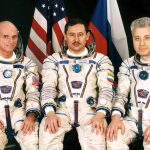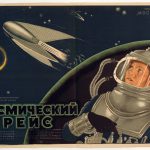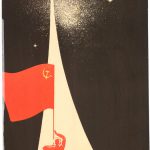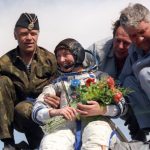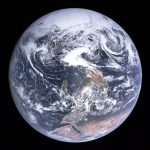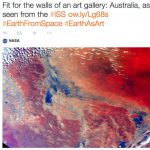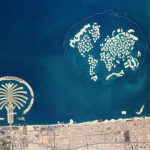Through the lens of a space tourist
Article DOI: https://dx.doi.org/10.15180/150407
Abstract
This essay attempts to contextualise the experience and documentation of the world’s first space tourist, a multi-millionaire American businessman Dennis Tito, who vacationed on the International Space Station in 2001. The essay brings together two parallel elements of this historical event: the political transformation of the Russian space programme which made the private flight possible and the cultural significance and impact of the event. The first space tourist is both a direct product of the newly commercialised space programme and a reflection of a new worldview, with new values and expectations.
Keywords
citizen explorer, Dennis Tito, Energia, International Space Station, MirCorp, NASA, overview, Space Adventures, space tourist, sublime, tourism, world picture
Introduction
https://dx.doi.org/10.15180/This essay focuses on the world’s first official space tourist, the multi-millionaire American businessman Dennis Tito. As the first paying customer to fly to the International Space Station (ISS) in 2001, Tito’s journey can be seen as a conceptual and historic turning point within the history of space travel following the end of the Space Race of the Cold War and inaugurating the space programme as a new marketplace. The arrival of space tourism in the new millennium marks a milestone in the history of space travel – one in which the century long desire for citizen flight has been realised as a premium luxury experience made possible by the new politics of the Russian Federation. In this sense, Tito’s trip to outer space reflects on a new perspective of the world made possible by the space programme’s transition from national and political aims to an era of capital and consumer oriented ideals.
The ‘tourist’ is one who circles around a central point, returning to where they came from, and it is precisely in the etymology and cultural history of tourism that we can begin to picture this new phase of space exploration. One way that we might understand this transition is by looking at Tito’s own narrative of the trip and the photographs he took from the Earth’s orbit. Gazing back at the Earth through the eyes of the space tourist, we now have a categorically new space image – the tourist holiday photo. For the fee-paying space traveller, the journey to space has a unique status, carrying different connotations than the technical work of astronauts and cosmonauts on the ISS. In this sense, the space tourist can also be understood in a political context, where the ability to ‘view’ or to ‘experience’ are forms of rarefied privilege and achievement. The space tourist has a unique ‘mission’, so to speak, in search of an authentic expression of the limits of human experience. This essay will use Tito’s personal experience in space, not only to capture a key transitional moment in the history of international space science, but also to reflect on the implications that space tourism might have for the future of space exploration.
My holiday in space
https://dx.doi.org/10.15180/150407/002In 2007, at Pepperdine University’s Graziado School of Business and Management, Dennis Tito, a CEO from California, shares a personal slideshow of images from his trip to outer space.[1] One of the first visuals to appear on the lecture screen behind him is the iconic Soyuz rocket being prepared at the launch pad in Kazakhstan. As Tito promptly points out, the design of the rocket dates all the way back to the Soviet military’s Intercontinental Ballistic Missile Programme (IBMP) and the historic launch of Sputnik-1 in 1957.[2] However, the particular rocket in his footage was launched on 28 April 2001 with Tito on-board as the world’s first space tourist. Tito had purchased his seat on the Soyuz TM-32 mission at the cost of $20-million dollars, spending 7 days, 22 hours, and 4 minutes vacationing on the ISS.
Space travel, Tito explains during his lecture, was a lifelong interest, sparked by the Soviet’s launch of Sputnik-1 and a youthful fascination with the Space Race, setting him on the course to study Aerospace Engineering in college. Subsequently, he worked for five years at Cal Tech’s Jet Propulsion Laboratory (JPL) in the 1960s, calculating the trajectory of the Mariner spacecraft mission to Mars. Dissatisfaction with the salary of a space engineer prompted Tito’s early career change into a ‘financial engineer’. By the 1980s he had established the Wilshire Associates investment management service, where he made his fortune in pension funds. This was followed by the creation of the Wilshire 5000 Index, a company that monitors macro-level stock activity.
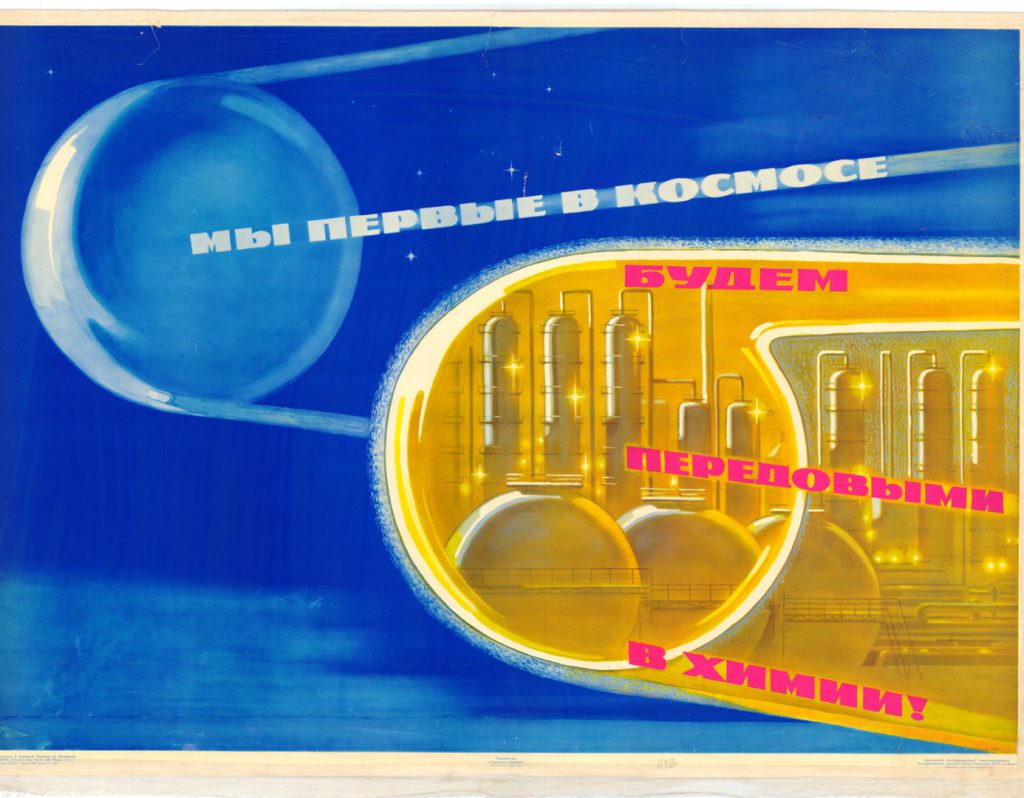
Despite his early transition into the world of finance, Tito insists that it was a natural evolution from one science to another. In fact, he explains that the computer programming skills that he developed at JPL were the very same ones that he used to make the primary calculations within the stock market. Taking a broad view of market movements and tracing the trajectory of a rocket depended on the same engineering solutions. Now, as the world’s first space tourist, Tito has been able to achieve the ultimate ‘overview’: a businessman whose company was among the first to visualise and capture macro financial movements in the stock market, has also looked down upon the world from afar.
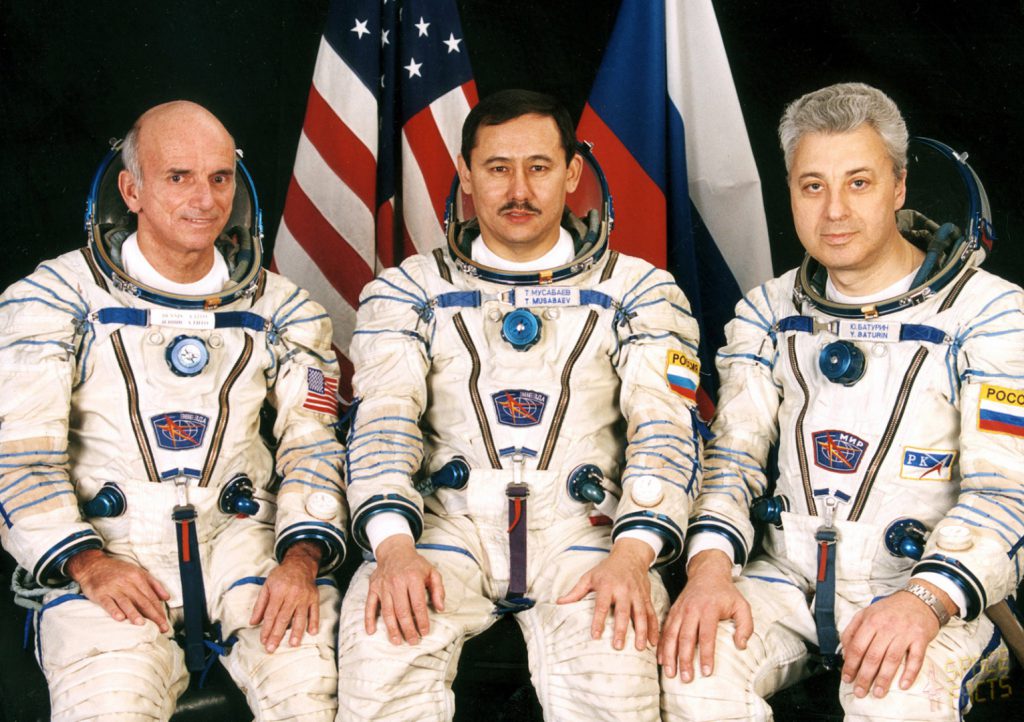
While Tito’s first-hand account of what some might call the first holiday in space has thus far been overlooked as a footnote in the broader history of space travel, I would like to suggest that it signals a definitive transition in the orientation of the US and Russian space programmes. More than a novelty, Tito’s journey represents the beginning of a new worldview – a dramatic shift from the Cold War perspective that looked back on the Earth as a battlefield, or even an ecological gaze on the Earth as a fragile and finite organism, to one that looks back on Earth as a luxury attraction. It is no surprise that Tito’s lecture took place as part of The Dean’s Executive Leadership Series, which invites speakers to ‘share their view on the real world of business’.[3] Indeed, his slideshow responds to the premise by presenting the view of the world from a perspective of privilege and business achievement.
During his teenage years Tito anticipated his own space voyage in the context of the popular science fiction of the time – a vision that prevailed alongside the governmental and military space programmes. The image of the space-age interstellar traveller was already drawing on a long lineage of civilian explorers in speculative science fiction literature and film at the turn of the twentieth century. The pioneering trip to the Moon in Jules Verne’s novel, De la Terre à la Lune (1865; From the Earth to the Moon), Georges Méliès film, Le Voyage Dans la Lune (1902; A Trip to the Moon), and the Soviet Union’s feature film Cosmic Voyage (1933), portray adventurers and enthusiasts embarking on journeys inside of spacecraft. Elements of the space tourism industry also first appeared in the space age fictions of Arthur C Clarke’s, A Fall of Moondust (1961) and Joanna Russ’ Picnic on Paradise (1968), which feature wealthy Earthlings and their misadventures in space travel.
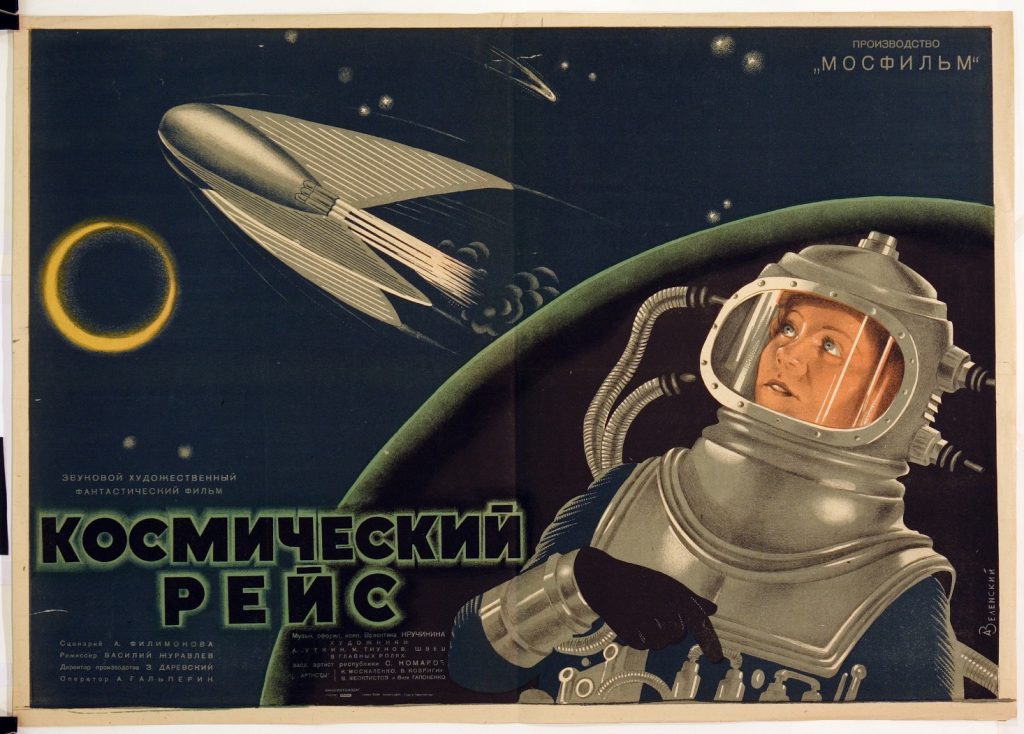
As new technologies have continued to revolutionise everyday life, visions of space exploration have also proliferated, constantly speculating on the physical and territorial limits of human experience. In Space and the American Imagination, historian Howard McCurdy (2011, p 5) writes that, ‘The grand vision of space exploration drew considerable strength from its capacity to excite and entertain’. Suggesting that the very scale and ambition of these visions were ‘crucial to their survival in the marketplace of imagination’ (McCurdy, 2011, p 6). Tito himself specifically points to the classic novel 2001: A Space Odyssey (1968) written by Arthur C Clarke and its film adaptation by Stanley Kubrick as the seed for his own early space travel fantasy. In keeping with 1960s popular culture, the space faring passengers in the film travel in comfortable and luxurious Pan American Airways spaceships and stay in space hotels run by the Hilton Corporation (2001: A Space Odyssey, 1968).[4]
But in the actual year 2001, at the age of 61, Tito’s prospects of accomplishing his lifelong dream of orbiting the Earth came together very differently from his fantasy. Instead of comfortable shuttle planes, it was the appropriated infrastructure of the newly commercialised space industry of the collapsed Soviet Union and a $20-million-dollar contract that created the necessary conditions for his flight.
Opportunities: personal, political and economic
https://dx.doi.org/10.15180/150407/003In order to appreciate Tito’s new symbolic role within the history of space travel, it is necessary to view it in relation to the matrix of political, cultural, and market imaginaries that helped him get there. Although Tito prefers to see himself as a pioneer, in many ways he took his place in space history after it had already been imagined and defined, first by centuries of speculation and visionary science and finally in the introduction of commercial space enterprises of the new millennium. Tito himself has become a kind of an artefact within this cultural and institutional history, which begins much earlier, in the origins of the Soviet space programme.
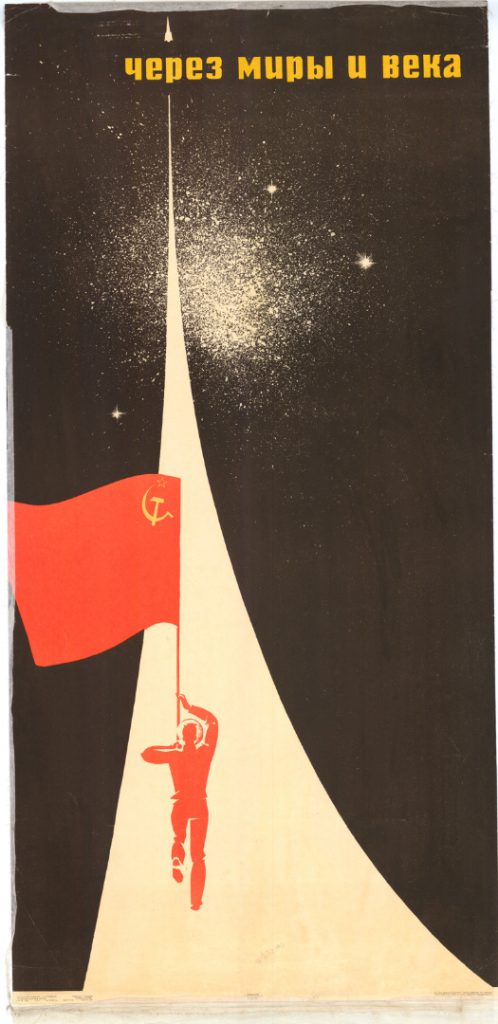
The first generation of Soviet rocket engineers were deeply influenced by both the technical and the cultural fantasy of space travel (Siddiqi, 2004). At the end of the Second World War, these visionaries were developing long-range missiles in the post-war competition between the USSR and the USA. However, it was the drive to see a scientific application of rocket technology that persevered even the threat of nuclear war. While working in the IBMP, the Chief Designer of the Soviet rocket programme, Sergei Korolev began testing suborbital flights with street dogs inside of the heads of the rockets, taking the place of the nuclear warhead. During one of the early rocket experiments in which an untrained puppy successfully returned from a stratospheric flight, Korolev exclaimed, ‘Space travellers will soon be flying in our spaceships with state visas – on a holiday!’ (Romanov, 1990). It was this fantasy of widespread civilian exploration of space that ultimately ushered the nuclear programme towards a race to the Moon.
The decade long ‘Space Race’ seemed to turn science fiction into reality, culminating in some of the most iconic moments of the twentieth century. And yet, in the fading spectacle of the NASA moon landing, space programmes underwent extreme national criticism as the public began to blame the lack of social welfare, inequality, and other social depravations on excessive government spending (Makemson, 2009). At the height of the race, NASA’s budget equalled four per cent of the total federal expenditure, more than was designated to education or health care (Handberg, 2003). Space exploration, which in many ways became symbolic of Cold War competition, cost as much as any other modern war, nearly bankrupting the Soviet Union in the process and causing severe public disapproval in the US.
In order to sustain the future of space exploration past the lunar missions of the 1960s, both the Soviets and the Americans had to think beyond the short-term political value of extraordinary missions, towards long-term institutional reform. The space programmes had proven to have strategic value for foreign policy objectives, as well as producing a highly skilled workforce that could not simply be dismantled due to unpopular cost over-runs. The structural reforms of the 1970s changed the space programmes forever, even prompting US President Jimmy Carter (quoted in NASA, 1979) to state that ‘The first great era of space is over. The second is about to begin.’ It was in the time of wider political, economic, and societal transformation that the culture of the space agencies was forced to change as well (Woods, 2009).
Beginning in the 1970s both NASA and the Soviet space programme shifted their focus from one-of-a-kind technological feats towards the stability of long-term scientific research and routine access to space. Over the following decade, the Soviet Union transitioned to successfully maintaining a permanent presence in orbit aboard a series of space stations called Salyut. In the meantime, NASA began the design and production of the reusable Space Shuttle programme. As historian Brian Woods (2009) has noted, NASA’s Space Shuttle ‘promised technology that would precipitate a revolution akin to those thought to have been engendered by the ship, the train, and the aeroplane’. This new infrastructure would open the door for investors, entrepreneurs, and potentially the general public, deeming it ‘the next logical step in space’ (Congressional Record, 1973).
In order to balance the expenditure of the Space Shuttle design and operation, NASA calculated the potential subsidy in the form of payload costs – or space cargo that would be shipped by private parties. Payloads mainly included scientific and medical research experiments as well as satellites and their parts. But more significantly, this cargo was accompanied by Payload Specialists – partially trained crew who joined the Shuttle missions, and over the years of the programme saw politicians, scientists, engineers, business representatives and even a Saudi prince in orbit. The Soviets also opened the doors of their space station through a programme, called Intercosmos [5]. This programme created joint space ventures with the allied Eastern European and Communist countries: Bulgaria, Cuba, Czechoslovakia, East Germany, Hungary, Mongolia, Poland, Romania, and Vietnam. Intercosmonauts were ‘guest cosmonauts’ who would join the Soviet crews in the mid-1970s and 1980s on missions to the Salyut and later on the Mir space stations. Just like the payload specialist, the guest cosmonauts did not receive the full extent of cosmonaut training. Their week-long missions were designed by their respective countries and focused on scientific research, international cooperation, and Earth observation. Unexpectedly, the multicultural crews of the Intercosmos programme not only paved the way for building further international space relations between the East and the West (Draguns, 2011), they also reflected Buckminster Fuller’s (1968) utopian notion, that ‘we are all astronauts’.
Towards the end of the Intercosmos programme, and with only ‘slight modification’, the Soviet space agency was able to offer the guest seat to the Mir space station to paying customers (Johnson, 2007, p 181). In 1989, Tokyo Broadcast Systems paid $12 million dollars to fly a Japanese reporter, Toyohiro Akiyama. In 1991, a British business consortium negotiated a flight for the British chemist Helen Sharman, the first woman to visit the Mir space station (Zimmerman, 2003, pp 292–301). These two international, civilian space travellers completed cosmonaut training in Star City, had specific missions developed by their nation states, and had their tickets financed by their governments. Although the space program was in a sense officially opened to the market by these events, the notion of commercially viable tourism was still a distant consideration.
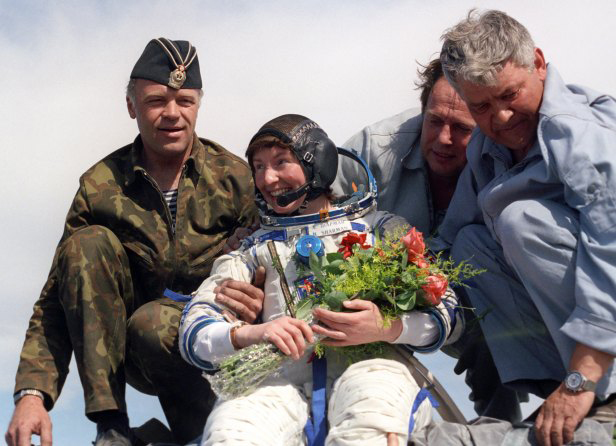
As the Space Shuttle programme continued, the payload costs that were meant to subsidise its operation did not meet NASA’s initially promised calculations (Johnson, 2007). To entice private consumers, NASA had to offer a highly discounted payload rate, in a sense using tax dollars to subsidise commercial users (Woods, 2009) – a move which directly clashed with the government’s ‘ideology of the superiority of free enterprise over government activities’ (Johnson, 2007).
In an attempt to regain control, US President Ronald Reagan passed the Commercial Space Launch Act – a law ‘giving power to the private and consumer sector to capitalise on the ventures in outer space and space technology’.[6] Reagan’s 1984 reform to the National Aeronautics and Space Administration Authorization Act called on the private commercial sector to begin competing in the space market, developing an independent industry for rocket technologies, launch pads and space enterprises. President Reagan and a group of advisors from the business community determined numerous commercial activities that could be developed on the platform of a new space station as well as ‘permit quantum leaps in our research in science, communications, in metals, and in lifesaving medicines which could be manufactured only in space’ (Reagan, 1984b).
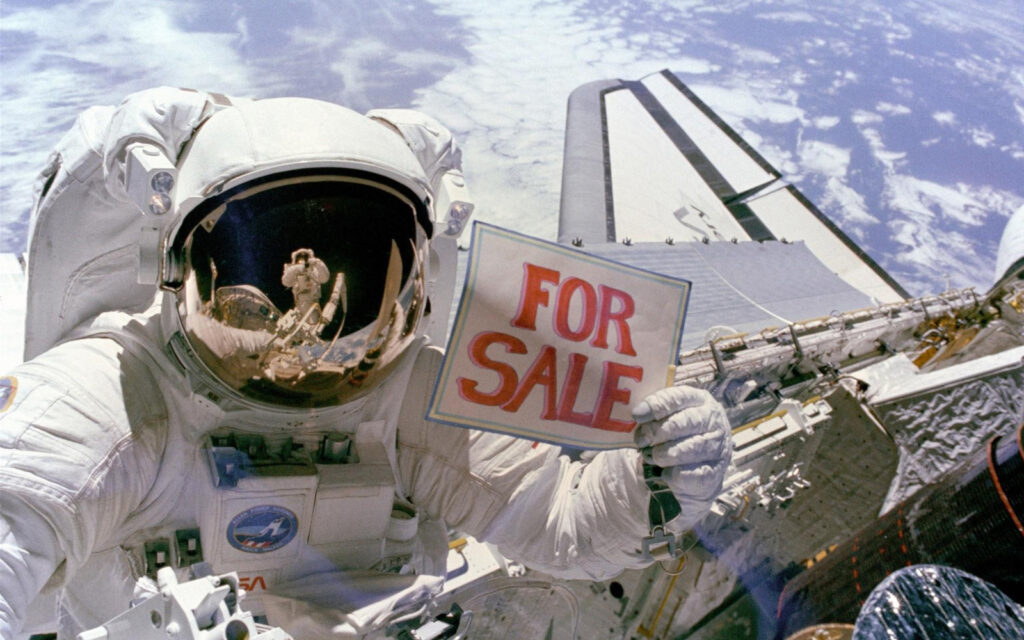
The US was confident in the growth of the commercial space industry ‘fuelled by the competitiveness of private enterprise’ and believed that the coming space economy would soon pioneer new space ventures, creating new billionaires in the process (Gump, 1990).[7] Historians, journalists, lawmakers, tech enthusiasts, and the public all agreed that NASA’s traditional model of government funding was incapable of facilitating the future of space travel and the new economic frontier[8]. Compounding this political consensus was the Challenger Space Shuttle disaster of 28 January 1986, which forced NASA to pause its space programme and temporarily suspend collaborative projects. With the uncertainty of NASA’s long-term support and the turn towards the open market in the late 1980s, America’s entrepreneurs hoping to invest in the space market soon found themselves working with the Soviet Union, where the space programme was more receptive to commercial ventures in a struggle to remain afloat.
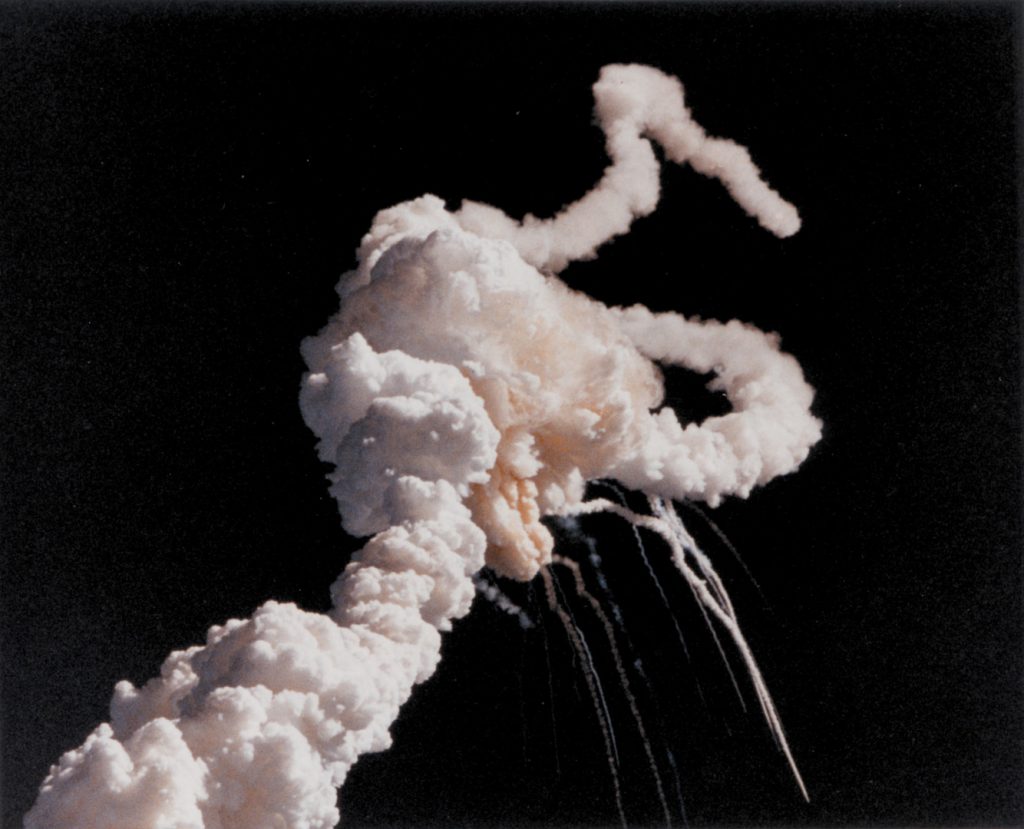
Following the fall of the Soviet Union, as the space programme transitioned from Soviet communism to the market model of the new Russian Federation, other countries now had a chance to conduct their own international space programmes in partnership with Russia.
MirCorp, an agency co-founded by the American businessman Jeffrey Manber was among the first American enterprises to partner with the space programme of the new Russian Federation. At the end of the 1990s MirCorp partnered with the world’s oldest space organisation, ‘S.P. Korolev RSC NPO Energia’ (Energia), known simply as Special Design Bureau number 1 when it was initiated by the Soviets in 1946. Energia operated as a central design bureau for the technology of the Soviet space programme. In 1999 MirCorp and Energia began to develop a commercial platform as a last resort to save the ageing Mir space station, and it was MirCorp that initially brokered Tito’s trip with Energia in the year 2000. Ultimately, the mission was finalised through Space Adventures, Ltd[9] aboard the ISS, but MirCorp played an important role in initiating and defining the precedent for the journey. In his memoir, Manber (2009) describes how Energia radically redefined the model of the Soviet space programme through their embrace of the commercial market:
The new head of Energia envisioned a free market where his private sector cosmonauts would ferry everyday people aboard his Soviet rockets, where passengers could live aboard the brand new space station Mir, controlled by his company. Energia’s space engineers would conduct industrial research for foreign companies and governments; even shoot advertisements for consumer products.
As Manber (2009) points out, the transformation of the Soviet rocket programme into a commercial space service was something few had imagined in the heat of the space race thirty years prior: ‘Just how has it come about that we owe it to the Russians for showing that capitalism and tourists can thrive, like dogs, monkeys, yeast cells, and fighter jocks in the zero-gravity of the space station?’
In parallel with the reforms of the Kremlin, then head of Russia’s space programme in Energia, Yuri Semenov, began to oversee his rocket engineering company much like a CEO, taking advantage of the market reforms sweeping over the new Russian Federation and accelerating their results. In order to create the funding to maintain the Mir space station, Semenov and Manber leased the space station for use by other countries. ‘In so doing,’ writes Manber (2009) in his memoir, ‘Semenov’s Energia broke with the tradition born with the space age, that space services were an extension of foreign diplomacy, not a commercial venture.’
The mutually beneficial transformation provided financial support for the Russian space industry and allowed other nations to pursue research and develop their own space technology, leaving NASA’s model of state funding ‘a relic of the Cold War’ (Manber, 2009). Eventually, even NASA was forced into collaboration with Energia in order to put their astronauts into space. As the money made from a Pepsi commercial shoot on the Mir space station generated the necessary funding to begin to manage NASA-Russian relations, the partnership became symbolic of a new era of collaborative space exploration.[10] This partnership led to the planning, financing and construction of the ISS. The first dollar earned from the newly formed partnership between Energia and NASA is now hanging in a frame at the Energia museum alongside the Sputnik and the Vostok spacecraft.
Dennis Tito had originally visited Moscow to enquire about flying with the Soviet space programme in 1991, around the same time that a military coup was trying to prevent the break-up of the Soviet Union by attempting to bring down Mikhail Gorbachev’s government. Having weathered the collapse and re-organisation of a nation, Tito returned in the year 2000, in the midst of a new commercial co-operation between the Russian Federation and NASA and successfully initiated the process of booking his ticket on the Soyuz. This time, the Russians were ready, and the image of the world’s first space tourist was carefully constructed and managed by MirCorp. The launching of the first Citizen Explorer was also the launch of a new market, announcing that outer space was open for business. Those who could finance their own pioneering journey would become the face to represent the end of the Space Race and the beginning of space tourism. First in line for this role were America’s corporate elite and Hollywood celebrities.[11] The Citizen Explorer was to serve as ‘a bridge between the two once-competing nations’ and open the door for everyday travellers, including paying customers (Manber, 2009). The fact that Tito was an American businessman was as symbolically important as the fact that he was the first to pay. The branding and marketing campaign came at the cost of $8 million dollars out of the $20 million dollars that Tito paid for his trip. As part of the branding campaign, MirCorp succeeded in creating a media frenzy that singled out Tito as ‘the world’s first space tourist’.[12] MirCorp encouraged the idea of a ‘new’ cultural narrative, or as Manber (2009) writes, ‘The reign of future tourist flights have been described as beginning with Tito and never before’.
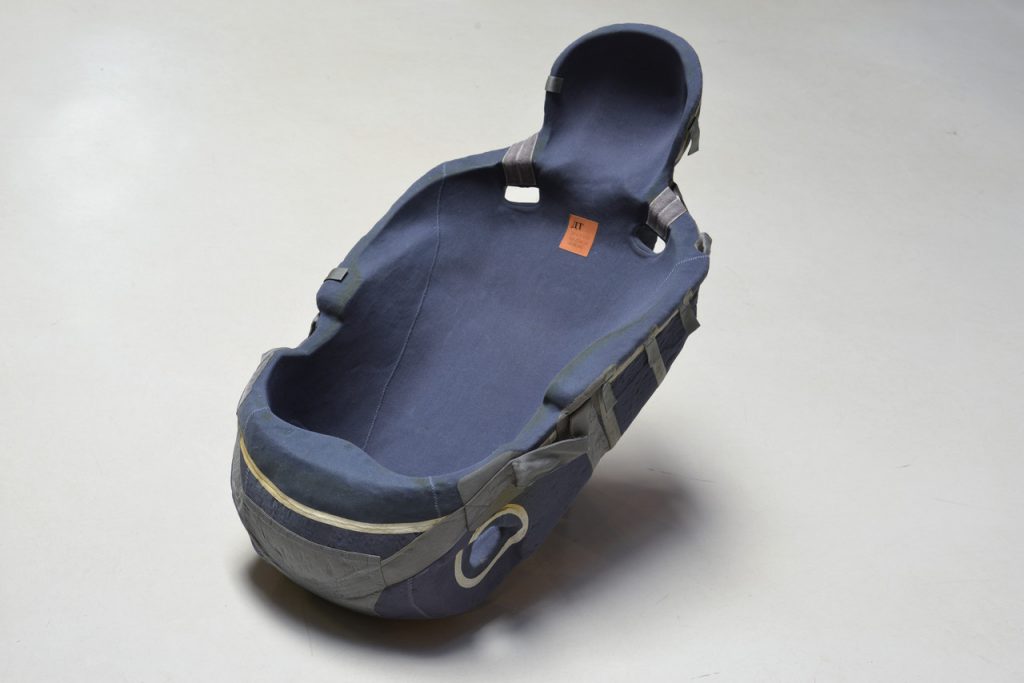
The idea of Tito’s presence aboard the space station gravely concerned NASA’s officials and ISS international partners, as well as the rest of the astronaut crew (Harland, 2005). They worried not only about his age and physical wellbeing, but also about his minimal participation in training and language requirements necessary for both the cosmonauts’ and astronauts’ missions. In order to satisfy the ISS partners, lengthy contracts were drawn up between NASA and Tito, which went as far as to specify legal consequences for disturbing the work of astronauts on-board the mission. Tito for his part was not deterred by these concerns or the contractual relations. He had little personal interest in the historic significance of his mission, although he enjoyed the publicity and the media attention it involved. Above all else, Tito wanted to experience spaceflight and it was this desire that drove him through the years of negotiations with the space agencies. During his lecture he boasts, ‘The advantage of being a tourist is that I didn’t have any work to do. I was the first person to ever fly in space that didn’t have a choreographed activity’. For Tito, his space trip was a personal mission, not one to make political or scientific statements or breakthroughs. He understood his trip in terms of the accepted categories of vacation, entertainment and economic opportunity. Unlike the technical work assigned to the cosmonauts and astronauts, Tito was mostly concerned with the uniqueness and authenticity of his experience, and therefore highlights this aspect of space travel in his lectures. During his presentation at Pepperdine, Tito goes on to reflect on what he thinks his contributions were to the history of space travel. In a field that consistently attempts to categorise events as the first of a kind, Tito explains that his ‘claim to fame’ is that he ‘had more fun in space than anyone else’.
The new worldview
https://dx.doi.org/10.15180/150407/004This narrative of Dennis Tito and his journey to space was presented to the world by MirCorp as a kind of political milestone in the history of space travel, but it was also an important moment in the history of tourism. The emergence of the space tourist signals the opening of a new territory for tourism, one that sees the Earth itself as the ultimate destination. If we think of a ‘tour’ as an orbital journey, a tourist performs a round trip returning to the point where they started (Theobald, 1998, pp 6–7). Beginning with Tito, seven international tourists have circled the Earth and returned to their point of origin. However, it is not only the idea of a circular or orbital journey that translates so well to space travel, it is also the underlying idea of free movement around the globe. As Ueli Gyr (2015) observes, ‘Tourism crosses borders: spatial, temporal, social and cultural’. Tourist traffic flows globally, moving people to different time zones and climates, even seeing post-communist Russians vacationing in the West. Transport innovation has been essential in enabling modern tourism and the new global forms of holiday experience have been shaped by the successive technological advances of the ship, the train, the aeroplane, and now also the Soyuz rocket.
Our modern forms of tourism date back to at least the eighteenth century, when travel for the sake of experience emerged as a rite of passage for young male aristocrats, educated elites, as well as artists and writers.[13] Alongside the requisite ‘grand tour’ of continental European cities, the more adventurous travellers seeking self-discovery found themselves in increasingly exotic, sublime and disorienting locations. Most important in this pursuit was an idea of the privileged view or vantage point. In Germany in the late eighteenth century, alpine climbing and other nature expeditions were sought out as aesthetic experiences, and as tourism developed as an art form, it also generated new genres of fine art production to illustrate the experience (Brilli, 1997). The industrialising societies of Western Europe found a new appreciation for the cascading views of natural grandeur, captured in the landscape paintings of the German Romantics. These works, which emphasised confrontations with sublime nature, brought together the emotion and descriptive power of the travellers’ diaries and sketches with the monumentality of history painting. By the early nineteenth century it was common to see the world through the representation of these travellers, such as the figures in Caspar David Friedrich’s paintings, viewing the dramatic landscape from over their shoulder. Here, there is a paradoxical tension between the emotional anxiety of the sublime and the always distant and elevated position of the viewer. As social historian Tony Bennett observes, ‘Even where Europeans were keen also to experience “reality” as directly as possible, as in their ventures into unknown places or, in a rather different way through the development of highly accurate replicas, the idea of detached representation remained important’ (Macdonald, 1998). The cosmopolitan traveller of the nineteenth century was a detached beholder of the world who simultaneously sought out more and more direct and authentic forms of engagement with that world. Astronauts and cosmonauts have retained this simultaneously intellectual and emotional regard for the sublime view, and often convey such sentiments in their accounts of space walks, moonwalks, and orbital flights. Stepping out into the Hadley Rille lunar mountains in 1971, Apollo 15 Commander David Scott reflected, ‘As I stand out here in the wonders of the unknown at Hadley, I sort of realize that there’s a fundamental truth to our nature. Man must explore. And this is exploration at its greatest’ (Casey, 2013, p 191).
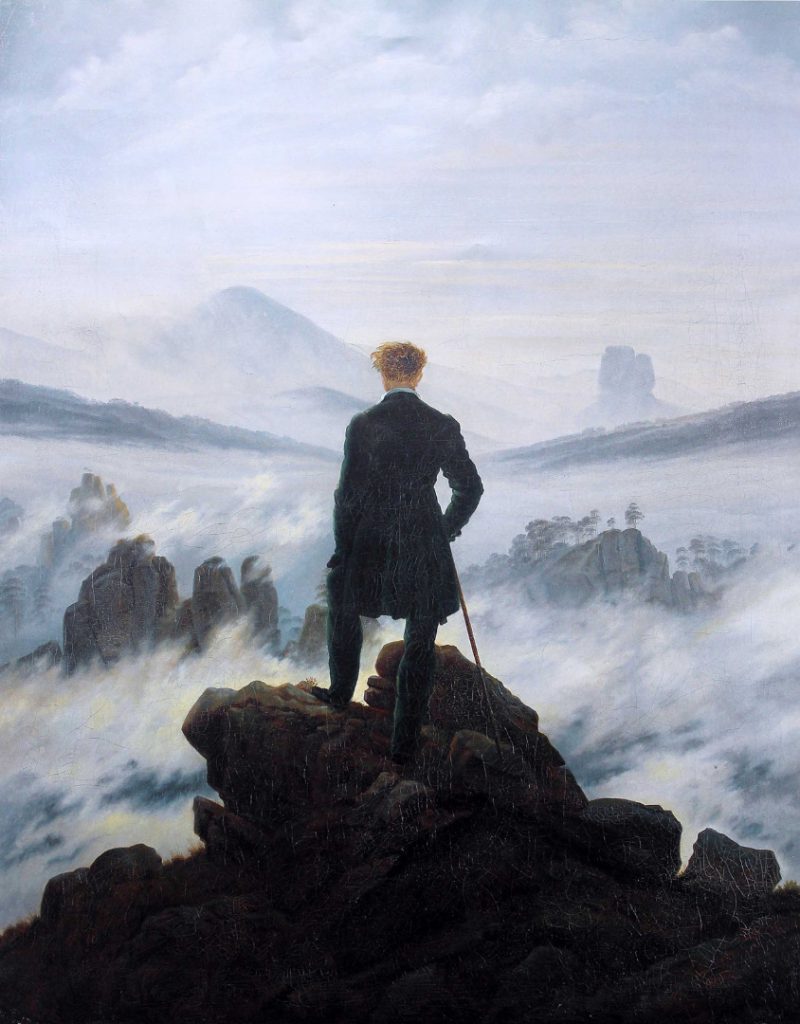
In the late 1860s, even a decade prior to the first aeroplane flight, Jules Verne predicted the profound impact of flight and the effects of the aerial view. In his ground-breaking science fiction novel, From the Earth to the Moon, Verne (1867) writes, ‘We shall travel to the stars just as today we go from Liverpool to New York, easily, rapidly, surely, and the oceans of space will be crossed like the seas of the moon’. Michel Ardan the poet and traveller in Verne’s novel, was modelled on the French photographer Félix Tournachon (Nadar), who in 1858 had ascended on a hot air balloon flight in an attempt to photograph the aerial view of the Earth. Nadar wrote prolifically about his observation of the Earth from the balloon. Both Nadar and Verne’s character Ardan testify as to how the aerial view transformed the way in which we understand our world. From his balloon, Nadar saw the diminished features of the landscape in their miniature forms on the ground below him from what he believed to be a view of supremacy. As Mark Dorrian and Frederic Pousin (2013) have written, ‘From the 18th century onward, the phenomenon of human flight generated profound transformations in the cultural imagination. The aerial might even be claimed to be the central modern visual form.’ But more important than the aeronautic experiments of pilots and the projections of writers, it was the generalisation of flight among travellers and tourists that brought the aerial view into popular discourse (Thebaud-Sorger, 2013).
While projecting a selection of still photographs and hand-held recordings on the lecture screen at Pepperdine, Tito (see Video 2) reflects, ‘I spent about 30 hours listening to opera, as I looked out at space’. He goes on to explain that even six years after the flight, he often looks back at this footage at his home in the Pacific Palisades to reminisce about the experience. As a tourist in the Romantic tradition, Tito went to space for the same reason that Prussian aristocrats climbed the Alps. The documentation, retelling, and re-visitation of the journey anchors his experience in reality and attests to both its uniqueness and authenticity. And yet, like the romantic sublime, the most important parts of the experience were beyond words. ‘It’s unbelievable that you can go in nine minutes from sitting on top of a launch pad to seeing the Earth like this,’ Tito says, gazing at his own slides. Tito is obviously overtaken by emotion when he describes his flight. He is able to testify to what he saw and experienced only by pointing to the pictures and video clips. Reviewing personal footage from inside of the Soyuz spacecraft at the launch site, Tito states: ‘This will speak for itself.’ Tito relies on the impact of his visuals to induce the emotions, which he felt but cannot describe. ‘This slide will give you a kind of a feeling for what I was seeing’. Eight minutes and fifty seconds after the launch, Tito is in orbit around Earth. ‘Nothing can explain the thrill!’. He jokes about the Russian space technology, creating a narrative of suspense and embedding himself as the protagonist in the story – a man on a mission.
In the grand tradition of tourism, it is just as important to be pictured beholding the landscape as it is to actually witness it. ‘I was videotaping my position in the capsule,’ Tito explains while showing footage of fragments of his torso and knees inside the Soyuz spacecraft. When showing a fly-through video tour of the space station he highlights his own sleeping bag and the place he claims to have had ‘the most comfortable sleep in the world’. These personal connections are crucial to capturing the evidence of the authenticity of his experience. ‘This is my seat and this is what I saw when we first entered orbit. That’s what the Earth looks like’. The camera focuses out of the window on to the blue curvature of the globe in the distance. This is both an image that we have seen before and yet it is distinctly new – the first tourist’s photograph of the Earth.
Spaceflight has undoubtedly been a completely new and literally ‘other-worldly’ experience for the select few who have flown, but – rather than being closer to outer space – it was the fact of being that much further from the Earth, and our encounter of looking back at the Earth from space that has had the most important cultural impact (White, 1998; Diederichsen, 2013; Singleton, 2013). For instance, the image of the Earth captured by Apollo 17 in 1972, was referred to as an ‘icon of our age’ by the astronomer Carl Sagan (1994, p 6). In the 1970s this image, commonly known as ‘the Blue Marble’ and ‘the Whole Earth’ became representative of global unity and the fragility of our environment, perhaps most famously through The Whole Earth Catalog (Brandt, 1968) and Frank White’s seminal text, The Overview Effect (White, 1998).[14] However, the idea of this global overview was already acknowledged even in the 1960s, with the very first orbital flights. Despite the fact that the first cosmonauts were fighter pilots enrolled in a military programme, the aesthetic and cultural dimensions of capturing images of the Earth from space was one of the primary objectives from the very first flight. In fact, Earth observation was built into the very concept of space technology, making the spaceship the perfect scenic lookout point. The first manned spacecraft series, the Soviet’s Vostok, was a modified craft originally designed to carry a spy camera on board. This mechanical ‘eye in the sky’ was replaced by passengers, who could not only fulfil military objectives, but also convey what they had felt and seen to a rapt worldwide audience.

The inaugural human space flight, performed by a Soviet pilot, Yuri Gagarin, on 12 April 1961, was a quintessential marriage of national objectives and personal travelogue. The in-flight sound recording of the 108-minute journey around the Earth was a testament to the impact the view from space had on the first cosmonaut. Viewing the Earth from the window of the Vostok-1 spacecraft, Gagarin famously tells mission control how beautiful the Earth looks.[15] During the second manned flight performed by a Soviet pilot, Gherman Titov, the camera was pointed out the window and back at the Earth, in an attempt to visualise those emotions reported by Gagarin, and to capture a new kind of image of the world from the vantage point of divinity.[16] The view of the Earth from space elicited a distinctly metaphysical reaction in the cosmonauts and astronauts who experienced it, but also, to a certain extent, even in those millions of people who experienced the images of those first views (Overview, 2012). By the time that Tito gazed out of the ISS at the Earth below, we had all been the audience of decades of testimony and media imagery transmitting what a space traveller should, and would experience during space flight. ‘Earth is such a precious place,’ says Tito on reflection. ‘You look at the atmosphere and you can see how thin it is – just a wisp over the curvature.’ In the same sense, the ISS now allows people to log in and view the Earth in real time through life feed cameras on board, while listening in to mission control.[17] The images broadcast are there to entertain and excite the viewer back on Earth, taking us to the heavens, as it were, to experience a deeper connection with the planet.
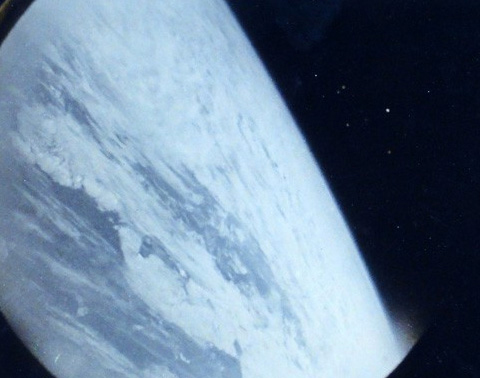
Nearly fifty years after Gagarin and shortly after his own trip, Tito’s slideshow of images seemingly resemble a long tradition of images from space travel. Indeed, in the new millennium, images from outer space are ubiquitous in popular media: Earth and weather satellite observation, as well as cosmonaut and astronaut mission snapshots archived by their respective space programmes. Despite their modern day prevalence, images from outer space have also had the ability to define the twentieth century and shape our understanding of the world (Singleton, 2013). As seen through the frame of the Space Race between the USSR and America, dramatic lift-offs, likeable dogs and apes, Technicolor space walks, a fragile blue Earth rising on the horizon of the Moon, and the debris of the shuttle disasters have all elicited popular fascination. Even to this day, the images of alien landscapes broadcast by the Martian rovers are creating new narratives within our global cultural and scientific history (Vertesi, 2015).
However, something about the images in the lecture slideshow – and the person who took them – are unique within the history of images that came before. With his trophy photos, the space tourist represents a categorically new worldview, with new values and expectations. If every ‘perspective of Earth serves as a metaphor for the beliefs of its day’ then there is an inherent new value produced by the ones who are doing the ‘looking’ (McCurdy, 2011). The space tourist has produced a new view from space. Documentation has always been an important aspect of space history and since Tito’s flight, the power to produce those images has moved away from science to the market. With the introduction of commercial space tourism, we now have a new category of the space-image that sits curiously alongside satellite mapping, scientific documentation and national propaganda.
As a reflection on the images produced by the Apollo programme, a NASA representative exclaimed, ‘One hundred thousand miles out from Earth there is no room for a space race, no place for Russian-American competition. This is something for all mankind’ (Poole, 2010). This statement reaffirms White’s thesis in The Overview Effect, that the view from space transforms people in positive ways, creating an image of unity and peace. However, as Jordan Bimm argues in ‘Rethinking the Overview Effect’, believing in the ‘natural’ ability of the overview to transform society ‘eclipses and discredits other ways of seeing, experiencing, and thinking about the planet’ (Bimm, 2014). In this sense there is a clear distinction between the astronaut testimony, which makes up The Overview Effect and the one given by Tito.
Beyond their historical significance, images of the Earth and outer space inform our material culture in new and unexpected ways. ‘The fundamental event of modernity is the conquest of the world as picture,’ writes Martin Heidegger (1950, p 71) in The Age of the World Picture. Heidegger’s claim can be understood at a number of registers. On the one hand, images from outer space can literally encapsulate the ultimate representation of our world. On the other hand, Heidegger sees the world as a representation of the essential phenomenon of modernity – the experience. In this sense, where the human becomes subject, and the world becomes picture, the world is assumed to mean the totality of experience, and picture as that which is depicted. Heidegger explains how this phenomenon is best encapsulated in the idea of a ‘world view’. He writes, ‘As soon as the world becomes picture, the position of man is conceived as world view’ (Heidegger, 1950, p 70). In this sense, it can present a variety of viewpoints: Tito’s privileged position, both as a wealthy businessman, and one who views the world from afar.
‘Looking out the window this is typically what you would see,’ says Tito about the curvature of the blue marble, in this case the main attraction. But on a closer examination, seeing the globe throughout his one hundred and twenty eight orbits in space, Tito makes one striking observation, telling his audience that the Earth looked different each time he saw it. He specifies the differences in texture and colour, the distinction of natural features through pictorial terms. He tells his audience that he selected some ‘pretty pictures’ to show off the subtle differences that he had observed from space: the clouds lined up in the direction of wind look like a corn field; the textures of the desert sands; the break up of the ice in Canada and ice flow during spring; a storm approaching; the weather front sharply defined; a dried up lake bed that looks like an ear; and the site where China performed their first nuclear test in 1967.
When the general public first saw images of the Earth as a whole sphere, the distance seemed to erase all political borders and traces of human impact (Poole, 2010). From this distance, there was a reflection on how absurd human actions were, how minute, in respect to the scale of the Earth and the universe. From the distance of the space station, however, being able to see the man-made features from space impressed Tito above all. Gazing back at the Earth through the eyes of the space tourist, we are no longer faced with a delicate organism of the Earth’s whole ecosystem, but with a tableau of man-made construction constantly in flux. He shows some of his footage flying over the Middle East where the boundaries between Israel and Occupied Territories are clearly visible in the linear breaks in vegetation. ‘What this illustrates if nothing else is that you can see man-made objects from space.’ The familiar experience of listening to someone narrate their recent holiday photos is complicated by the fact that Tito is quickly clicking through every continent on the globe.
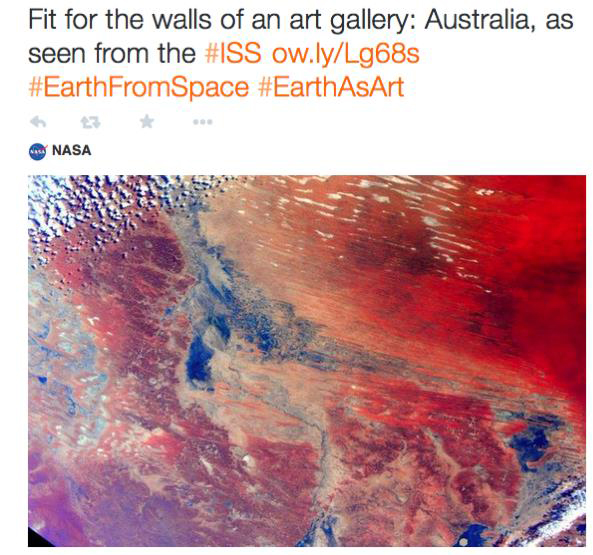
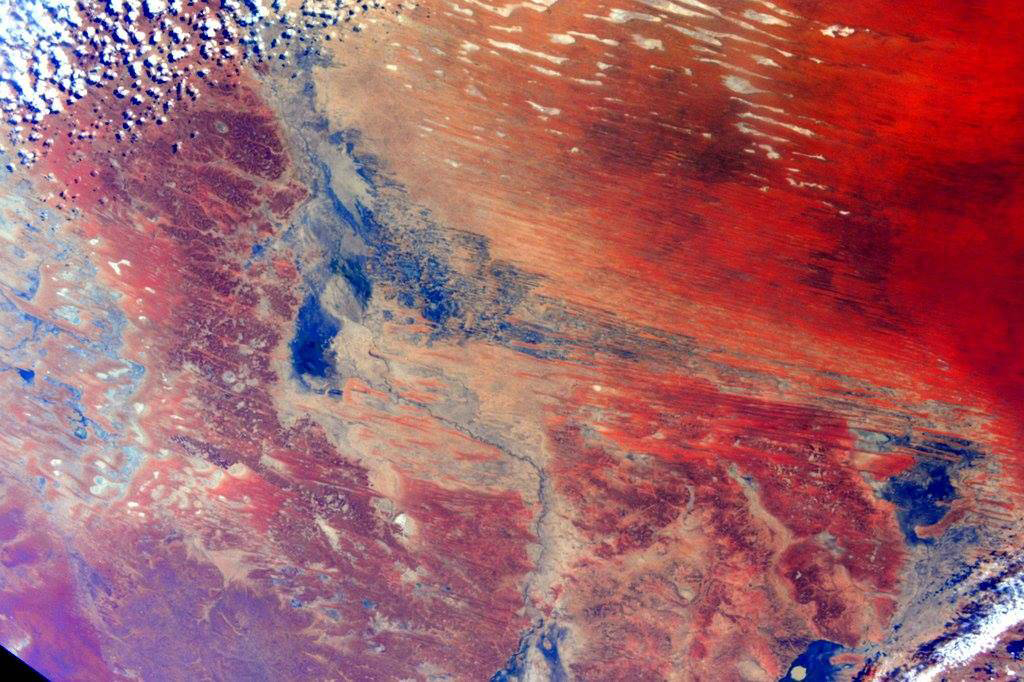
Tito’s claim, that the Earth seemed different each time that he looked at it, may be one of his most intriguing observations. Most of the observable changes in his images are reflections of human impact on the planet, from changes in the polar ice caps to the architecture and electricity that distinguish our urban environments. Mark Dorrian (2013) has written that, ‘As the audience of geospatial data is no longer made up of only cartographers, scientists, military strategists and state operatives but rather – overwhelmingly – consumers, how commodities look from sky, and how they address it, is a new concern’. Seeing the Earth from above is the desire to see ourselves reflected back as an image to study and enjoy, and the image that Tito saw reflected back was one of technological progress and development – a civilisation of constant change.
‘The Earth is rotating underneath you. You say, this is my planet, and you can see the whole thing.’ The transforming view from above changes not only based on natural phenomenon but also strangely in relation to the viewer. Tito wants to see himself reflected in the world he views as his own. Seeing mountain ranges, rivers, and clouds is less stimulating than witnessing the human-made creation and interference on the surface of the planet. Tito’s experience, based on consumption, produces a new worldview. Understanding the planet as both a site and a sight to be consumed, the view itself becomes a commercial platform. The Earth is a vehicle for advertising that is visible on the scale of the view from space.[18]
A notable example of this consumer view on the global scale is the Palm Islands development on the coast of Dubai, United Arab Emirates, described by the developers, Jan De Nul and Van Oord as ‘Master planning the Universe’ (Kerr, 2008). The island development, which broke ground in 2001, takes the shape of two palm trees surrounded by rocky crescents and an archipelago representation of ‘the World’ and ‘the Universe’ on the coast of the Persian Gulf. Built with sand and rock from the Gulf, the constructed artificial islands are filled with mansions, entertainment, and leisure complexes that add over five hundred kilometres of new private beach space to the city of Dubai. This artificial island resort is an extraordinary display of fantasy and wealth constructed as a luxury tourist attraction, which advertises itself as a place of vacation on the scale of a worldview.
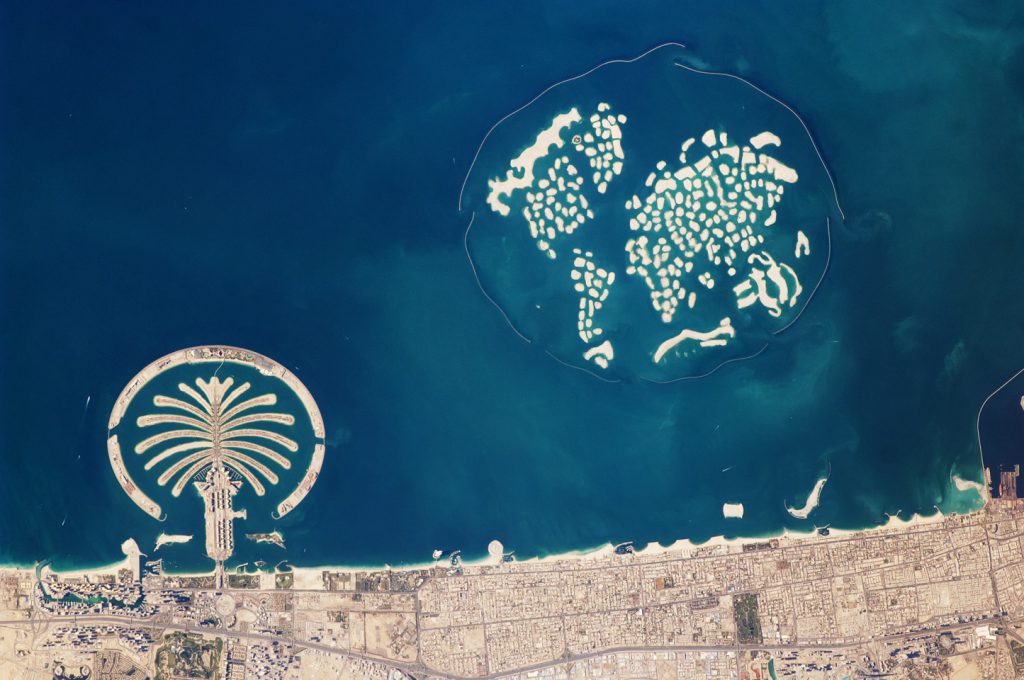
In 2001, the Palm Islands were under construction at the very same time that Tito, Earth’s first space tourist, gazes back at the world. The fact that Tito flew in the same year that this luxury leisure complex in Dubai began construction is merely a coincidence, but in a way they are symptoms of a cultural shift within a new world-picture. Thus, Tito’s observations of the world from the position of a wealthy space tourist will have a mutual reflection back in the form of a ‘universal’ resort. The policies of the Russian Federation and the Emirates are imprinted on the world, visually, culturally and politically.
A 2010 report into space tourism anticipated that it could be a billion-dollar market by 2030 (2010, p 11). Spencer and Rugg (2004) speculate that the future of the International Space Station will be as a converted ‘private orbital yacht’. They predict that by 2050, a million tourists will have travelled ‘off-world’, attending zero gravity sports events and zero gravity weddings. Tito himself is investing in a space agency. He founded and funds a research agency called Inspiration Mars, which hopes to take people to Mars by 2018.[19] ‘If you are looking for a business, space tourism is one with a great future,’ says Tito at the end of his lecture. The realisation of travellers in space is also generating a new reality on the ground, where man as subject, and Earth as picture create now yet another experience in our cultural history.
Acknowledgments
Special thanks to the Science Museum Group Research Department, Kate Steiner, the anonymous peer reviewers, Cosmonauts Project Leader, Annika Joy, and to Tim Ivison, for their comments, suggestions and help.
Tags
Footnotes
Back to text
Back to text
Back to text
Back to text
Back to text
Back to text
Back to text
Back to text
Back to text
Back to text
Back to text
Back to text
Back to text
Back to text
Back to text
Back to text
Back to text
Back to text
Back to text




